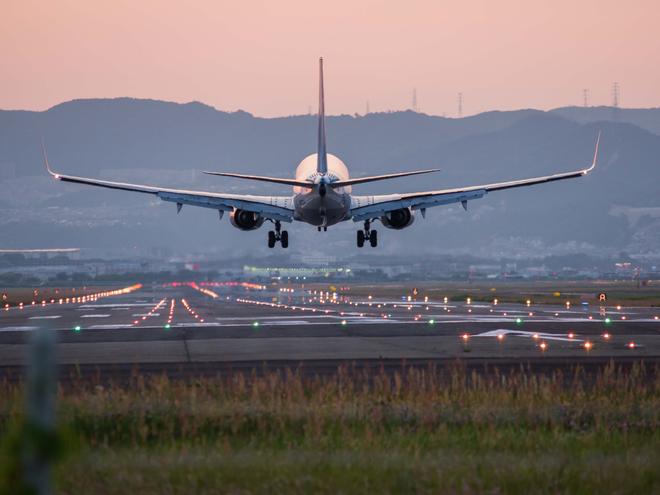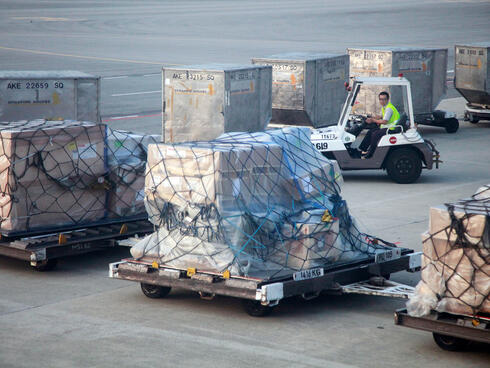
The carbon footprint per passenger on a round trip flight from New York to San Francisco is larger than the yearly footprint of the average person in 51 countries. Air travel plays a significant role in the climate crisis and now is the time to take action.
The COVID-19 pandemic has shocked the aviation industry with an unprecedented decline in flights. has been featured prominently in the news. While air travel emissions are lower right now, they are expected to rise again when the pandemic ends unless action is taken by governments, the aviation industry, and consumers of air travel. Returning to the pre-COVID status quo of aviation activity and the current adoption rate of lower carbon efficiency measures does not align with what the Paris Agreement indicates is necessary for aviation to do its part to address the climate crisis.
But we can help airlines build back better if governments set policies to put the aviation industry on a new climate-safe trajectory by prioritizing a more sustainable, climate-friendly approach moving forward. Climate impacts such as rising seas, worsening droughts, and increasing heat waves require carefully following the science. To avoid the collapse of key ecosystems, we desperately need all sectors of the economy to transform including the aviation industry.
Learn four steps the US Congress can take to rebuild air travel in a way that protects us against dangerous climate change. This policy vision was developed by Brad Schallert, Director of Aviation and Carbon Market Governance for WWF-US, and presented in testimony before the Senate Special Committee on the Climate Crisis.
1. Increase fuel efficiency
Better fuel efficiency is a first step to reduce the carbon footprint of air travel. Increased fuel efficiency could cut the carbon footprint of airlines by up to 2.5% each year. Airlines can do this by replacing older planes with more fuel-efficient models, carrying more passengers or cargo per flight, and using technology to avoid airports with high traffic.
While it is essential to cut emissions more deeply than this, strengthening efficiency standards and funding new efficient technologies are a great starting point. The US Congress should help by strengthening efficiency standards and funding new efficient technologies.
2. Shift to other forms of transportation
Let’s face it: An individual’s choice to fly is one of the most carbon-intensive choices one can make. Choosing to take a train or a bus instead can do the planet a huge favor and lessen the impact of your travel. Our local, state, and federal governments can make this decision even easier through investment in these alternative forms of public transportation.
Imagine how a modernized, high-speed US train system could make life easier for us and the climate!
3. Develop electric planes & less harmful jet fuels
There are a lot of technological advances happening in air travel, but innovations like electric planes are still a decade or more away. Congressional support for research could speed up this timeline, but until long-distance electric planes are developed, many flights will rely on liquid fuels — which have a higher energy density than batteries.
Changing the makeup of jet fuel can reduce emissions. Most promising are “power-to-liquid” fuels, which can be made with only water, carbon dioxide, and 100% renewable electricity!
4. Remove carbon from the atmosphere
For the aviation industry to truly be a partner in the global effort to limit warming to 1.5 degrees Celsius, they should support natural ecosystem restoration to help compensate for any residual emissions in the atmosphere.
Restoration of ecosystems such as mangroves, tropical forests, and seagrass meadows can store sizable amounts of carbon at a large scale. In tandem with other forms of emission reductions from the aviation industry, these nature-based solutions to the climate crisis can help us to avoid dangerous climate impacts.

© WWF / Matthew Lee

The climate damage caused by air travel is not only a result of carbon emissions. Burning jet fuel in the upper atmosphere creates an additional warming effect. Scientists believe this could represent more than half of the warming caused by aviation. Policies that focus only on carbon are not enough to align with the Paris Agreement. Solutions include lowering flight altitudes and avoiding areas with atmospheric conditions that are more likely to cause this additional warming effect.
GETTING AIRLINE POLICY REFORM RIGHT
To date, the US government has done very little to incentivize emissions reductions from US airlines, considering how significant the emissions reductions need to be. In the near term, however, Congress may have an opportunity to start making up for lost time: While the airlines have already received emergency support from Congress under the CARES Act stimulus package, they may need to come back to the table for additional aid if the coronavirus pandemic continues to disrupt air travel.
If Congress is going to use public funds to reboot the aviation industry, it should do so in a way that also works well for the aviation customer, the aviation worker, and the climate health of this and future generations. Federal financial assistance to the industry should come with conditions that protect the health of aviation workers and make sure they are able to support their families through this crisis.
The US aviation industry needs to get on a sustainable flight path now, because the climate crisis is not going away. With aviation emissions left unaddressed, we can expect major storm clouds ahead.
The airline industry is not the only sector of the US economy that needs to cut carbon. Tell Congress that the US needs to switch to 100% clean energy now.
Enviroshop is maintained by dedicated NetSys Interactive Inc. owners & employees who generously contribute their time to maintenance & editing, web design, custom programming, & website hosting for Enviroshop.
